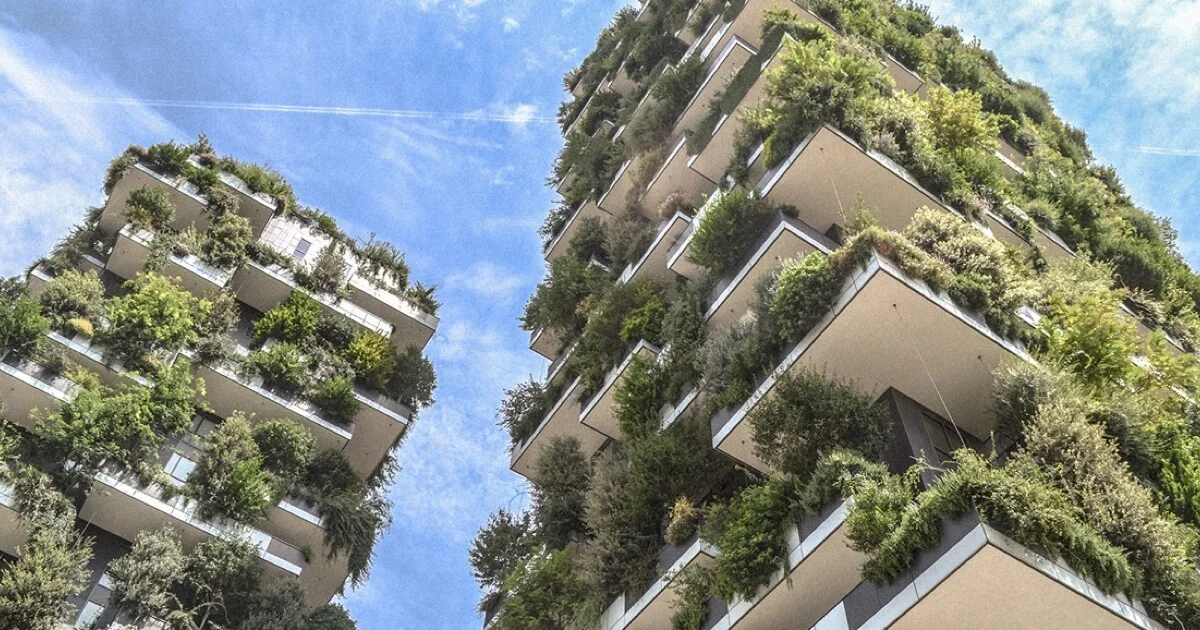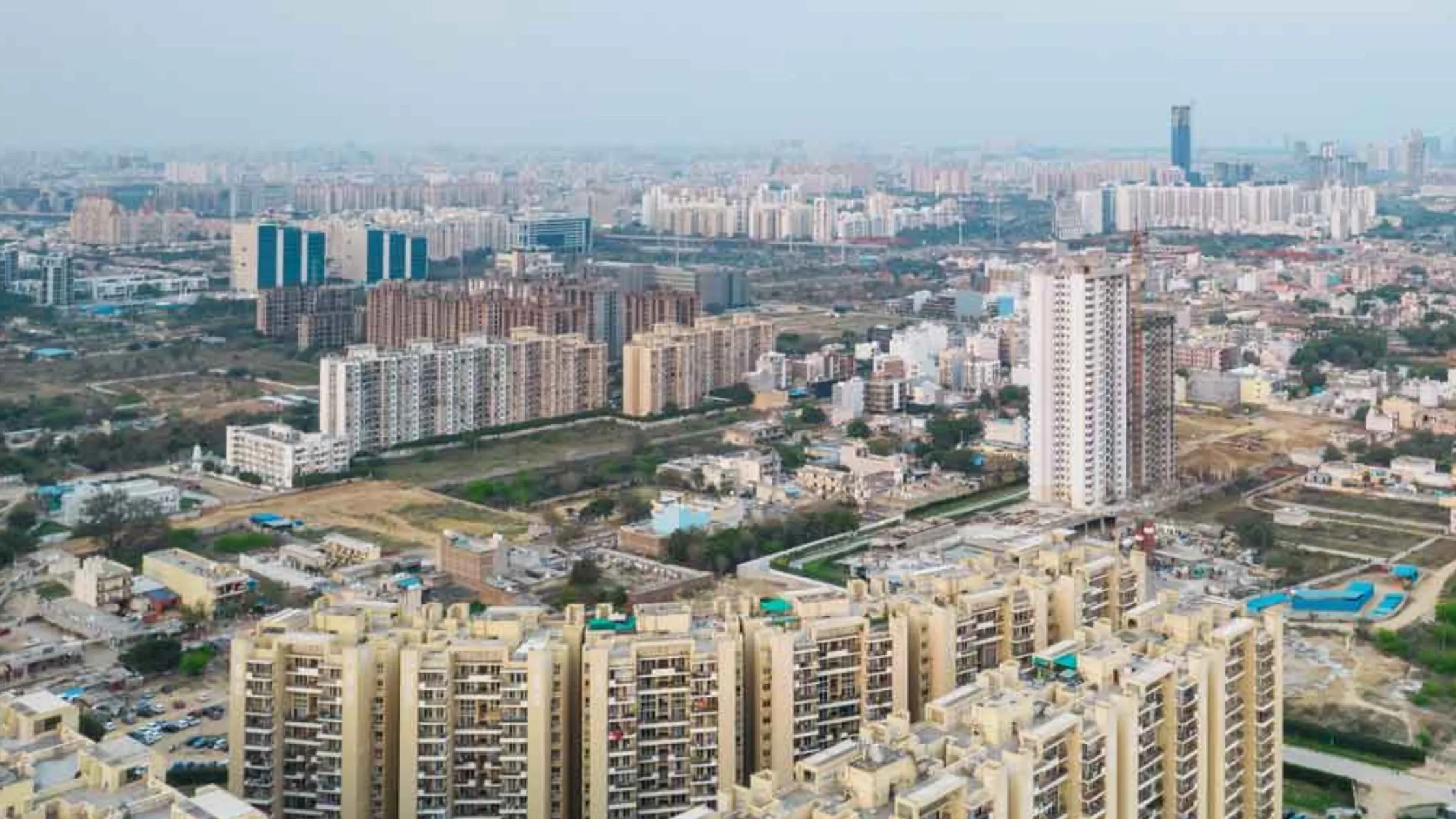Table of Content
- What is the Global Relevance of LEED Certification?
- Guidelines of LEED Certification
- LEED India Rating System
- How to Achieve LEED Accreditation in India
- Cost of LEED Certification in India
- LEED Stats in India
- Benefits of LEED Certification in India
- Indian Perspective on LEED Certification
- Conclusion
As India’s urban landscape continues to expand, the demand for sustainable infrastructure has never been more pressing. Rapid urbanisation, rising energy costs, and environmental concerns have made it essential for developers, corporations, and policymakers to prioritise green building practices. Among the most recognised frameworks for sustainable construction is LEED Certification in India, a globally benchmarked system developed by the United States Green Building Council (USGBC).
LEED certification is more than a label it is a comprehensive framework that addresses energy efficiency, water conservation, material sustainability, waste reduction, and indoor environmental quality. Buildings that achieve LEED certification not only reduce operational costs but also gain global recognition and provide healthier, more productive spaces for occupants.
What is the Global Relevance of LEED Certification?
LEED (Leadership in Energy and Environmental Design) has become a universally respected standard for sustainable construction, adopted in over 180 countries worldwide. Its global relevance is reflected in several key areas:
- International Benchmarking: Projects certified in India follow the same stringent criteria as those in the US, Europe, or the Middle East. This ensures global consistency and credibility.
- Corporate ESG Alignment: Multinational companies increasingly demand LEED-certified spaces to meet environmental, social, and governance (ESG) goals. Certified buildings help organisations achieve sustainability reporting targets efficiently.
- Competitive Advantage: LEED-certified properties often command higher occupancy rates and premium rents, appealing to tenants seeking operational efficiency and healthier indoor environments.
- Investor Confidence: Reduced operating costs, higher tenant demand, and proven sustainability performance make certified buildings attractive to investors.
- Policy Support: Many countries, including India, incentivise LEED-certified projects through tax benefits, faster approvals, or additional development rights.
- Global Recognition and Branding: LEED certification signals environmental leadership, enhancing developer reputation and positioning projects as future-ready in the global market.
By offering these advantages, LEED Certification in India not only contributes to environmental sustainability but also strengthens the economic and social value of real estate projects.
Also Read: Legal Tips For Buying Agricultural Land In India: A Complete Guide
Guidelines of LEED Certification
Achieving LEED certification requires strict adherence to internationally defined sustainability principles. Indian developers and professionals must focus on the following core guidelines:
- Energy Efficiency: Buildings are designed to consume less energy through efficient systems, LED lighting, smart HVAC solutions, and renewable energy integration.
- Responsible Water Management: Rainwater harvesting, wastewater recycling, and low-flow fixtures reduce dependency on municipal water supply.
- Reduction of Carbon Emissions: Sustainable construction practices and energy-efficient design help lower greenhouse gas emissions.
- Healthy Indoor Environments: Proper ventilation, non-toxic materials, and air purification ensure occupant health and productivity.
- Sustainable Materials: Preference for recycled, locally sourced, or responsibly manufactured materials reduces environmental impact.
- Efficient Resource Use: Waste minimisation, ecological sensitivity, and smart resource management are critical in densely populated Indian cities.
- Lower Lifecycle Costs: Reduced maintenance and utility costs make LEED-certified buildings financially sustainable over the long term.
These principles align India’s fast-growing real estate sector with long-term environmental responsibility while providing measurable benefits to building owners and occupants.
LEED India Rating System
In 2014, the Green Business Certification Inc. (GBCI) took over the LEED certification process in India, aligning local practices with international standards. Projects are now evaluated on a points-based system, with certification awarded according to performance:
|
Points Scored |
Certification Level |
Description |
|
26–32 |
Certified |
Entry-level recognition for meeting minimum sustainability standards. |
|
33–38 |
Silver |
Enhanced performance in energy, water, and resource efficiency. |
|
39–51 |
Gold |
Strong commitment to green building practices. |
|
52–69 |
Platinum |
Exemplary performance across all sustainability categories. |
This system ensures that Indian developers follow a clear roadmap to achieving globally recognised benchmarks in energy efficiency, sustainability, and environmental stewardship.
How to Achieve LEED Accreditation in India
For professionals, earning LEED accreditation demonstrates expertise in green building practices. The process involves preparation and passing an exam conducted by GBCI. Accreditation levels include:
- LEED Green Associate: Entry-level credential suitable for students, recent graduates, or new professionals.
- LEED Accredited Professional (AP): Advanced credential with specialisations:
- Building Design + Construction (BD+C) – Focuses on new construction and major renovations.
- Operations + Maintenance (O+M) – Emphasises improving building performance through sustainable operations.
- Interior Design + Construction (ID+C) – Specialises in commercial interiors and tenant spaces.
- Neighbourhood Development (ND) – Integrates green building with urban planning principles.
- Homes – Dedicated to single-family and low-rise multi-family residences.
Eligibility is straightforward: any individual aged 18+ can apply, and formal degrees are optional. These credentials position Indian professionals at the forefront of sustainable real estate development.
Cost of LEED Certification in India
The cost of achieving LEED Certification in India varies depending on project size, certification level, and membership status. Key cost components include:
- Registration Fee: ₹66,000–₹1,10,000
- Certification Fee: ₹1,46,000–₹7,30,000
- Consultant Fees: ₹10,00,000–₹30,00,000
- Additional Costs: Audits, modeling, and commissions may apply
For a mid-sized project, total costs typically range between ₹4.5–5.8 million. While the investment may seem significant, the long-term operational savings and increased market value make LEED-certified buildings financially viable.
LEED Stats in India
India has emerged as a global leader in green building adoption:
- 5,240+ participating projects
- 3.15+ billion sq ft of certified/registered space
- 1,700+ accredited professionals guiding sustainable projects
- Leading states: Maharashtra (334 projects), Karnataka (232), Tamil Nadu (157)
These figures underscore India’s commitment to environmentally responsible construction and its increasing prominence in the global green building movement.
Benefits of LEED Certification in India
- Energy and Cost Savings – Efficient energy use reduces electricity bills, while renewable integration ensures long-term savings.
- Water Conservation – Rainwater harvesting, low-flow fixtures, and recycling reduce strain on municipal supplies.
- Lower Carbon Emissions – Green practices help India meet climate targets and reduce environmental footprint.
- Healthier Indoor Spaces – Improved ventilation and non-toxic materials enhance occupant well-being.
- Market Value & Investor Confidence – Certified buildings attract tenants and investors, boosting property value.
- Government Incentives – Benefits include FSI relaxations, expedited approvals, and tax rebates.
- Efficient Material Usage – Sustainable, recycled, and locally sourced materials reduce waste.
- Global Recognition – Projects gain international credibility, attracting multinational tenants.
- Employment Growth – Creates jobs for architects, engineers, and green building consultants.
- Sustainable Urban Future – Supports environmentally conscious city planning and healthier communities.
Indian Perspective on LEED Certification
The adoption of LEED Certification in India has accelerated due to:
- Rapid urbanisation and energy demand
- Rising awareness of climate change and environmental impact
- Corporates seeking LEED-certified offices to align with global ESG mandates
- Government support through policy incentives and streamlined approvals
Major cities like Mumbai, Bengaluru, Delhi NCR, and Hyderabad have seen strong demand for certified commercial spaces. By 2018, India ranked third globally for LEED certifications outside the US, with over 899 certified projects covering 24.8 million sq metres. LEED is no longer optional it is a strategic differentiator in the competitive Indian real estate market.
Also Read: Property Registration and Mutation: What Every Homebuyer Should Know
Conclusion
LEED Certification in India represents a transformative shift in urban development, balancing economic growth with environmental responsibility. By adopting LEED standards, developers can reduce energy and water use, create healthier indoor environments, attract premium tenants, and gain global recognition.
For India, the rise of LEED-certified projects signals not only progress in sustainable infrastructure but also a commitment to future-ready urban growth. As the nation faces rising urban challenges, LEED offers a clear pathway to green, resilient, and globally competitive real estate.







_1767854635.webp)

_1767769068.webp)


Ans 1. LEED Certification, or Leadership in Energy and Environmental Design, is a global green building framework that ensures buildings are energy-efficient, environmentally responsible, and healthier for occupants. In India, it is important because it reduces operational costs, attracts premium tenants, and supports the country’s sustainability goals.
Ans 2. LEED is used in more than 180 countries, giving Indian projects global benchmarking and credibility. It also supports multinational companies with their ESG goals, enhances investor confidence, and allows certified buildings to compete on an international stage.
Ans 3. The guidelines focus on improving energy efficiency, conserving water, lowering carbon emissions, using sustainable materials, ensuring healthy indoor environments, and reducing overall lifecycle costs, making buildings both eco-friendly and financially viable.
Ans 4. Projects in India can achieve four certification levels depending on their performance: Certified, Silver, Gold, and Platinum, with Platinum being the highest recognition for exemplary sustainability practices.
Ans 5. Professionals can apply through the Green Business Certification Inc. (GBCI) and pass exams to become a LEED Green Associate or a LEED Accredited Professional with specialisations in areas like building design, operations, interiors, neighbourhood development, or homes.
Ans 6. The cost varies depending on project size and level of certification, but generally ranges between ₹45 lakh to ₹58 lakh for a mid-sized project, including registration, certification, consultant fees, and additional audits.
Ans 7. Such buildings save energy and water, lower carbon emissions, provide healthier spaces, attract investors and tenants, qualify for government incentives, and gain global recognition, all while supporting sustainable urban development.
Ans 8. States like Maharashtra, Karnataka, and Tamil Nadu lead the way, with major cities such as Mumbai, Bengaluru, Delhi NCR, and Hyderabad showing strong demand for LEED-certified spaces.
Ans 9. It ensures cities develop with a focus on resource efficiency, environmental responsibility, and climate targets, creating healthier, greener, and more resilient urban spaces for the future.
Ans 10. For developers, LEED is not just about sustainability but also about market positioning, as certified buildings enjoy higher occupancy, better rental yields, stronger brand reputation, and alignment with global real estate trends.